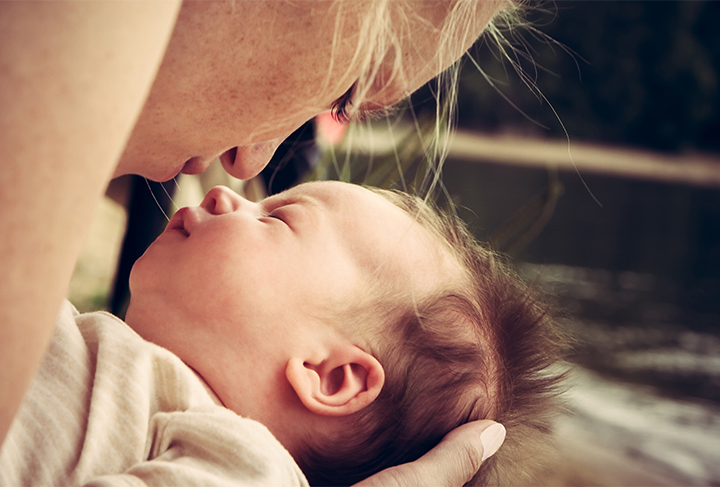
Breastfeeding Jaundice
- Home
- Locations
- Mercy Children's Hospital St. Louis
- Breastfeeding Jaundice
Over the last 10 to 15 years, media, hospitals and other organizations have been promoting the benefits of breastfeeding to new moms. However, with this renewed interest, we’ve seen an increase in breastfeeding-related jaundice.
A common condition in newborns, jaundice refers to the yellow color of the baby’s skin and whites of his eyes caused by excess bilirubin, which is produced by the normal breakdown of red blood cells. Jaundice occurs when bilirubin builds up faster than a newborn’s liver can break it down. It’s often caught and treated while moms and babies are still in the hospital.
Newborn birth is an incredible transition, full of new stimulation and stress that the baby’s body hasn’t experienced before. Bilirubin is the strongest known cellular antioxidant, with a role in protecting cells (brain, retina, blood cells) in the newborn during the transition from inside to outside the womb. But too much of it can also cause problems.
Two types of jaundice are linked to breastfeeding. Breastfeeding jaundice can occur when a breastfeeding baby isn’t getting enough breast milk. A baby could be having problems learning how to breastfeed, or the mother's milk isn’t in yet. This isn’t caused by the breast milk itself, but by the baby not getting enough to drink. The other, rarer type is breast milk jaundice. In 1 to 2 percent of breastfed babies, jaundice is caused by substances in breast milk that cause the bilirubin level to rise. This type of jaundice occurs after the first few days and slowly improves over a couple of months.
For breastfeeding jaundice, frequent nursing is one way to reduce bilirubin levels by flushing the system, increasing stools and maintaining hydration. New moms need education and support to do this properly. Earlier discharge policies can complicate matters because problems with nursing may not be noticed before mom and baby go home.
Babies who are borderline or at risk of severe jaundice will be discharged with phototherapy and a recommendation for a home nurse visit. All babies should be seen by a doctor within 48 to 72 hours after the baby goes home to assess for jaundice and determine whether treatment is needed.
Some infants are readmitted to the hospital during the first week of life, arriving at the emergency department with dehydration, sluggishness, jaundice and weight loss. They are treated with phototherapy and IV fluids. While there, the doctors measure the baby’s bilirubin levels and assess the effectiveness of the treatments given. If a serious problem is detected, a blood transfusion to remove the bilirubin is a last resort.
If you have concerns about jaundice or need assistance with nursing, ask your nurse for assistance while you’re in the hospital so any issues can be addressed as quickly as possible.
Dr. Elizabeth (Erzsebet) Jung, is a Mercy Kids neonatologist with Mercy Children’s Hospital St Louis.
